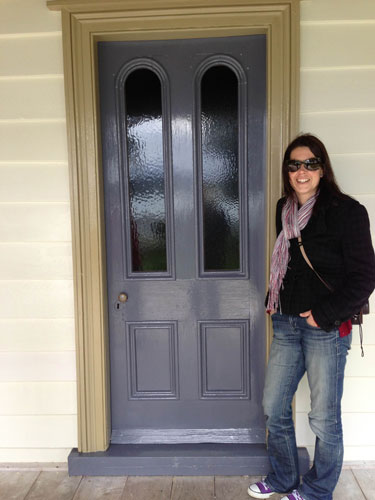Taking an idealistic view of the world, Cally Whitham records the ordinary, transforming it into a surreal image, reflecting the way things are perceived and altered through nostalgia and memory. Driven by a desire to remember, Whitham uses her camera to collect images, which allows her to preserve her surroundings forever.
At the age of 11, she spent Christmas using her first roll of film shooting her favourite things, including her aunt's farm, an old house she wanted to live in and a big tree at the beach. As an adult she returns to similar subjects recaptured in shadows of times past.
Based in New Zealand, Whitham finds the subtle, forgotten and overlooked in these locations, which are touched with beauty through their ordinariness and familiarity. Layering her photographs with emotion, the works explore the ways in which personal milieus are captured.
Source: www.cally.co.nz
The New Zealand photographer Cally Whitham focuses her artistic research on the depiction of everyday life She began photography at 11 years old when accompanying her father who was a painter. He roamed the countryside to do sketches of forests and farms. From an early age she therefore had painting as an artistic reference and mastered the techniques of the Beaux Arts.
Source: Yellow Korner
Interview With Cally Whitham:
AAP: When did you realize you wanted to be a photographer?
"When I was about 16 I think. I took a class at school and was hooked."
AAP: Where did you study photography?
"I studied at the Design School, which has since become Unitech."
AAP: How long have you been a photographer?
"21 years, with a few years break in the middle."
AAP: Do you remember your first shot? What was it?
"The first photo I ever took was of my grandparents and brother at a beach. I couldn't believe I was allowed to take a photo!"
AAP: What or who inspires you?
"Light inspires me. When the quality of light is just right anything seems possible; the unworthy becomes photogenic."
AAP: How could you describe your style?
"Pictorialism"
AAP: Do you have a favorite photograph or series?
"Wow, too hard to choose!"
AAP: Do you spend a lot of time editing your images?
"Yes I do. The initial photo is just a part of the process in creating an image. Post production is the place where the image and the vision I had come together. I don't photograph reality but rather create a potential or ideal reality and that potential is added in post production."
AAP: Favorite(s) photographer(s)?
"Alfred steiglitz in his early days and Julia Margaret Cameron."
AAP: What advice would you give a young photographer?
"Have a back job to pay the bills - it's a tough industry now to try to pay a mortgage on."
AAP: What mistake should a young photographer avoid?
"Not understanding the business, tax and admin side of being a photographer."
AAP: Your best memory has a photographer?
"The moments I have realized I was on to something during a shoot."